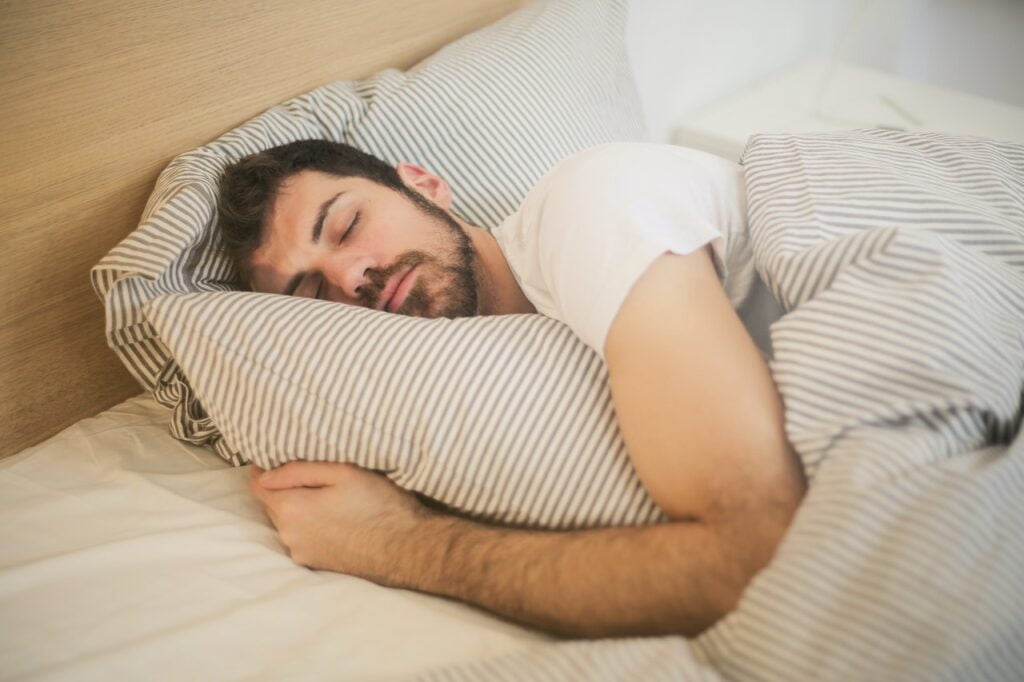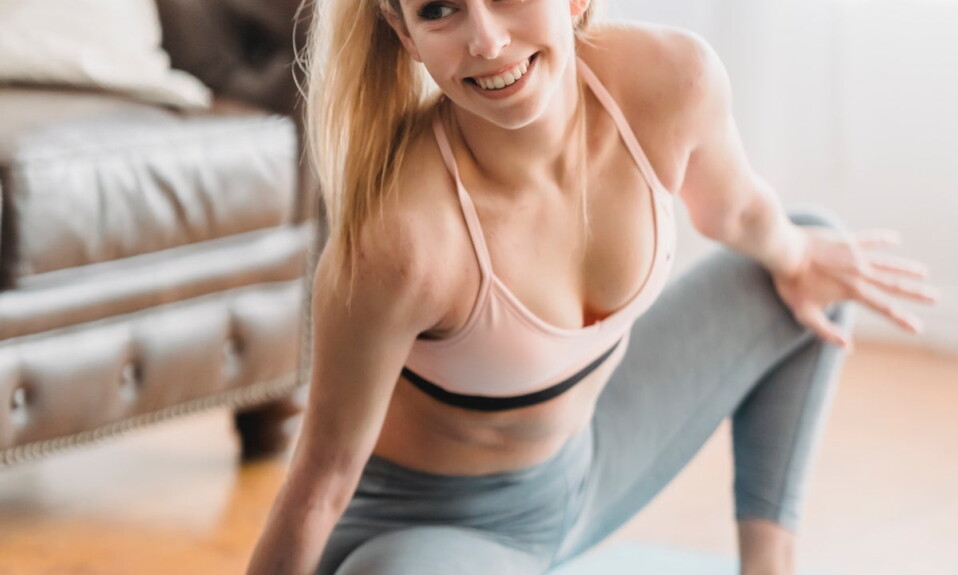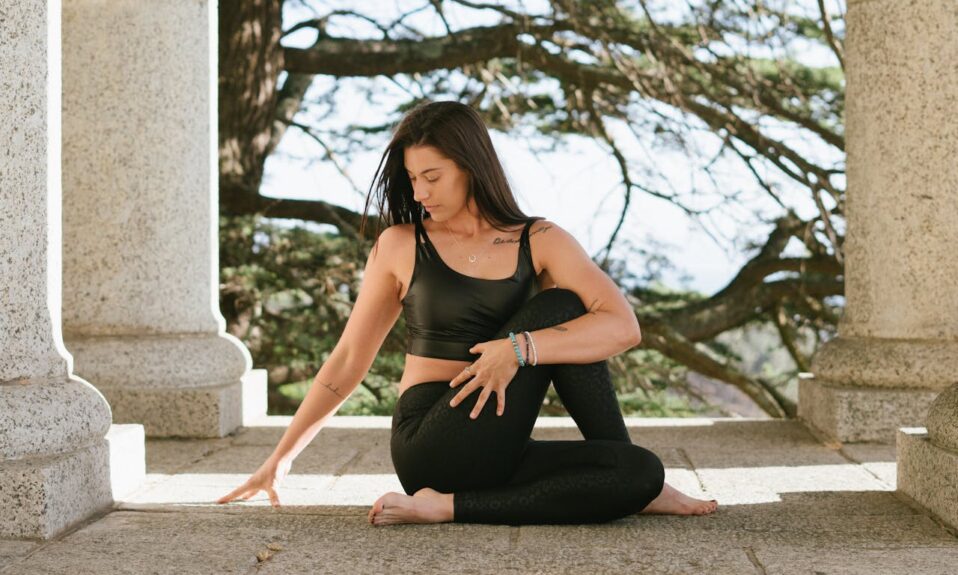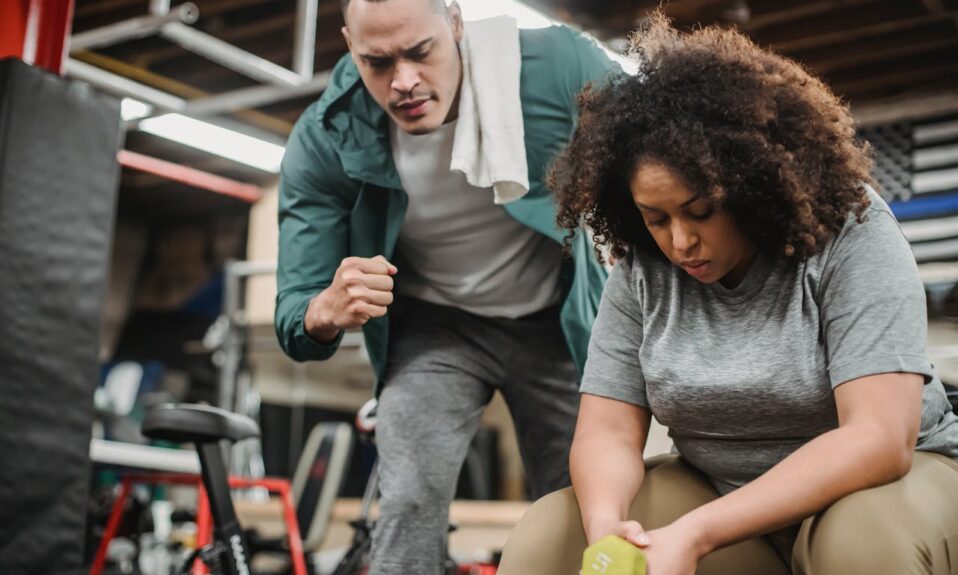“Incresing the Fitness level WILL HELP you to Spend your day actively “
“Increasing the level of fitness at your Sweet home”
Here are 07 easy ways to help maintain our fitness.
- Perfect Morning Stretches to Improve Your Fitness
If you’ve been trying to train yourself to wake up earlier, that’s great. Because you prefer the peace and quiet in the morning when there aren’t any ringing phones, texts, or notifications. It’s the ideal moment to benefit from the peace and begin your day successfully!
Starting out your mornings with a stretch routine or a trip to the gym is one way to make them truly unique. It gives you a lot of motivation for the rest of the day, makes you feel good, and gives you something to be proud of before you even start working.
In order to fully loosen up your shoulders, chest, and complete body and get you flexible and prepared to take on everything that comes your way, we are going to demonstrate our ideal morning wakeup routine to you today.
To get your body ready for the day, perform the next 10-move stretching routine before you leave for work or school in the morning. It will feel SO GOOD to you! It lessens aches and pains and helps with posture. Helps the blood to circulate more. Additionally, it quickly and efficiently keeps you robust and active throughout the day.
- Bent Knee Twist Up
- Shoulder Stretch Squats
- Alternating Camel
- Cat Cow
- Dancing Dog
- Plank Walk Opener
- Plié Twists
- Yogi Squat
- Yogi Squat and Straighten
- Back Bend
- Walk with your dog to Improve Your Fitness

According to many studies, walking with your dog provides more than eight hours of exercise per week.
Walking is a completely free and easy exercise that requires little effort and benefits not only your physical but also your mental well-being. If you’re looking for a simple yet highly effective way to lose weight and improve your overall health, walking is for you. People who are physically active throughout their lives are much less likely to develop this disease than those who lead a more sedentary lifestyle. And they have more volume in the hippocampus, the part of the brain responsible for verbal memory and learning.
A daily half-hour walk prevents serious problems like coronary artery disease, to name just one, by lowering high blood pressure and cholesterol levels and improving circulation. Due to deeper and better breathing, some symptoms associated with lung disease may show significant improvement with walking. Muscle tone and weight loss can also be achieved just by walking. Find your optimal pace, but don’t start jogging. This sort of speed walking is low impact and doesn’t require any recovery time, which means no sore muscles to keep you from getting out and walking the next day.
At least 30 minutes of moderate walking per day to reduce joint pain, stiffness and swelling. Building strong bones will help you prevent osteoporosis and reduce bone loss. Walking contributes to better blood flow to the spinal structures, which is important for pumping nutrients into the soft tissues and improving posture and flexibility, both of which are critical to a healthy spine. A group of university researchers worked with hundreds of university students. Walking changed his Mood for the better, although no one warned her about it.
If you still don’t feel motivated enough to start walking for your health, try taking a class or finding a friend who also doesn’t mind reaping the full benefits of walking. Another idea might be to hire a personal trainer
- How to Start Eating Healthy Improve Your Fitness ?

The next section is for everyone who has tried to start eating healthfully but failed or for those who simply don’t know how. Our opinion is that this will be the most effective strategy to begin eating healthily and to stay on track, making it simple to adjust to and sustain this new healthy eating lifestyle.
Finding all the wholesome meals that you love and appreciate is the first thing you should do when you decide to start eating healthier.
When you’re eating what you enjoy rather than switching to a new diet or following someone else’s meal plan because you don’t like the food you’re eating, it will be much simpler to lose weight. That won’t last very long. Therefore, the first step is to compile a list of the things you enjoy. So you can see here what we personally enjoy eating.
We’ll begin with our proteins. Red meat, salmon, shrimp, and chicken breast are all rich sources of the proteins we require. Avoid overindulging, but be sure to consume those at least once every two weeks.
Now, there are other protein-rich foods you may eat as well, particularly if you’re vegan or vegetarian. But these are the foods to eat because they are simpler for us to ingest than food and because they will help you stick to your plan and keep up your healthy eating habits.
Let’s now discuss veggies, which will also provide protein and other nutrients. With asparagus, broccoli, spinach, and bok choy, we’ll start. There are, of course, additional veggies, such as corn, avocado, and even potatoes. Eat more sweet potatoes than potatoes, according to advice.
We can also add some rice right here, along with whole wheat spaghetti pasta, quinoa, and other grains. However, these are all ingredients that we can consume frequently.
Now that we have that figured out, the next step is to identify your objective and calculate how many calories you will need to meet that target. Even if you only eat healthy foods, if you don’t eat enough or too much in relation to your goals, you might never achieve them. Your objectives may also change as you begin your fitness journey. Knowing how many calories you actually consume each day is crucial for this reason.
The last thing I want to mention to you is how you cook this dish since it’s also very crucial.
The way you cook the meal could entirely undermine all the healthy nourishment you are consuming. If you fried it in fat or add a ton of extra sauces with sugar, you’ll end up with hundreds of extra calories that you didn’t plan for and perhaps even lose some of the benefits from the vegetables.
Therefore, for the healthiest results, prepare your meal as thoroughly as you can—preferably on the grill or even in the oven—and avoid adding any sugar at all.
There are many different techniques for cooking great cuisine.
like sautéing spinach, which I’ll demonstrate in a another video. If you guys need assistance with calorie counting because you’re unsure of how many calories are in each item.
There are a ton of calorie counters available that may help you keep track of and figure out exactly how many calories you’re consuming with each meal every single day. You can search for them on Google or in the app store.
Drinking enough of water is another important thing you should do.
It has no calories and will cleanse your body of all toxins and impurities while also keeping you hydrated.
Save the world from hazardous plastic water bottles by keeping it hot or cold.
And if you follow these three fundamental stages, you ought to be able to start eating healthfully and, more significantly, keep up the good work. And if you haven’t been doing it already, this will advance your training to a completely new level. People mistakenly believe that eating healthy is unpleasant and uncomfortable, but when you follow a healthy diet, your body feels wonderful.
Because you’re providing your body with the right fuel in the right way, you’re supplying it with nutrients that will enable you to perform much harder and reach your maximum potential in the shortest amount of time possible. For this reason, you need to combine healthy eating with smart training to get the best results. And with that, we’ll finish things up for today.
- Use the stairs whenever possible.

The only way to burn more calories climbing stairs is through strenuous activity like lifting and lifting weights. Climbing stairs is excellent for health. Climbing stairs can be a very effective exercise for building strength and muscle and improving balance. Even if you’re trying to lose weight, the stair exercise can help you burn more calories and tone your muscles. This simple activity can also help you make your daily activities work better.Here are four health and fitness benefits of stair climbing exercises:
- A) Targets multiple muscles. Climbing stairs uses more muscles than walking, jogging, or running on a flat surface. Only the leg muscles are involved, while stair climbing also works the glutes, quadriceps, and hamstrings. This is an effective way to gain muscle mass without fat.
- B) Improves balance and endurance. Climbing stairs activates the stabilizing muscles of the foot, ankle, and personal tendons to help maintain balance. If you do this activity every day, you will also improve your stamina. You may experience leg and muscle cramps, but you will eventually feel energized.
- C) Check blood pressure. Climbing stairs is good for your heart health and helps control your blood pressure. This activity helps unclog arteries, improve heart rate, and improve overall health.
- D) Its good for mental health. When the body pumps blood, you get a rush of adrenaline that lifts your spirits. It is an excellent activity to reduce stress and anxiety.
How to climb stairs better. There are certain things you need to keep in mind when attempting this activity. First of all make sure you are in the right posture. Keep your back straight and don’t slouch. Slowly and then increase the intensity. Finally, it is very important to wear the right type of shoe for this exercise. Incorrect footwear can cause overexertion and injury.
However, if you already have balance issues and are prone to falling, weakness, or stiffness, skip this. Education. Apart from that, if you suffer from inflammatory conditions like arthritis or joint problems, consult your doctor before you start climbing stairs.
5 Do fidgeting

Your high school teacher hates this habit, but it’s good to look at it from a health perspective. Studies show that sitting for long periods reduces the risk of health problems. You may not realize that one of your jittery habits could actually be good for you. University researchers studied fidgety adults, and what they found might surprise you. This research shows that sitting at your desk in front of a computer for long periods of time is not good for your health .Reducing blood flow to the legs can lead to cardiovascular disease, but did you know? That a nervous habit that annoys some might get the blood flowing again.
We found that the average person makes 250 cups per minute, which resulted in an increase in blood flow. During the actual fidgeting, the university researchers studied healthy young men and women before and after three hours of sitting. Sufficient flow to avoid compromising arterial function, we believe that any type of leg movement is beneficial for the arteries of the lower limbs.
This is good news for students who are constantly fidgeting, as long as it doesn’t bother their friends or others and has potential health benefits. Why don’t you? But restlessness is not. A substitute for walking and exercise, perhaps in situations where we’re restlessly stuck in the office or on a plane, or getting the movement of life, can be a good alternative. Because vascular function is the bottom line, any movement is better than no movement.
- Meet a friend through a game and Play with children

Instead of meeting a friend at a coffee shop, arrange to meet at the local golf course or tennis club. It allows you to participate in the physical activities you need and the meeting will be fun. Playing with your kids allows you to spend more time with them while burning calories.
7. Sleep well

Sleep is one of the most crucial components of our health and lifespan, however in 21st-century civilization, it is being disregarded more and more, with disastrous results: Strong causal relationships exist between inadequate sleep and every major disease in the developed world, including Alzheimer’s, cancer, obesity, and diabetes.
A restful night’s sleep can aid in stress management, memory enhancement, creativity stimulation, maintaining a healthy weight, and preventing depression.
According to what we can tell, sleep is maybe one of the most democratic, readily available, and effective kind of health insurance you could ever hope for. Clearly demonstrate why a good night’s sleep is a crucial component of good health. However, the majority of people once believed that, after diet and exercise, sleep might be the third pillar of good health. As we continued our investigation and read additional accounts from other people, we came to the conclusion that we had probably been mistaken in thinking that sleep actually served as the base upon which the other two factors rested.
We’ll provide an illustration for each. First, we know that diet and exercise are effective if people are watching their food consumption and attempting to reduce weight.
They are attempting to lose weight, but they aren’t getting enough sleep. Because your body becomes very selective in releasing its fat when you are under-rested, dieting becomes, you know, very pointless in that aspect. Instead, 70% of all the weight that they lose will come from lean muscle mass rather than fat.
You already know that sleep deprivation will make you gain weight while keeping the muscle you desire to lose.
As a result, that comes first and serves as the basis around which nutrition is built. We are aware that two vital appetite hormones move in the wrong directions when there is little sleep. Leptin, one of those hormones, functions as a sort of fill-me-up signal for your body.
Despite the fact that Leptin and ghrelin sound like two hobbits, they work in opposition to each other. Ghrelin suggests you’re not happy with your food and want to eat more. What’s interesting is that when people lack sleep, real hormones are released. When you get too little sleep, your levels of the hormone ghrelin, which increases your hunger and tells you”I simply Greek deity an enormous meal, however i am not glad, i need to eat additional,” therefore you ought to limit them to perhaps simply 5 or six hours per night for every week. This will help your levels of leptin, which tells you to stop eating more, drop.
So it makes sense that folks who only get five to six hours of sleep every night will actually consume an additional 200 to 300 calories on average.
Let’s move on to exercise now. We’ve spoken about how activity serves as the foundation for diet when you don’t get enough sleep. First off, it becomes far less likely that you will really work out because your drive to do so wanes. Even if you do work out, the intensity of your workout will suffer as a result.
Therefore, it is less effective and efficient for things like your vertical jump height, muscle contraction strength, and even the exchange of carbon dioxide and oxygen in your respiratory systems to get worse when you haven’t slept. What’s even more alarming, though, is that your risk for injury increases when you are exercising but not properly cleaned up. This is incredible, so there is yet another example of how even if you’re trying to be physically active but not properly prepared.
The wonderful thing about that aspect of the link—as well as the relationship between nutrition and sleep—is that it is reciprocal; that is, if you start to make changes to your diet, you will begin to experience better sleep. But engaging in physical activity is a fantastic method to improve the quantity and quality of your deep sleep.
Going to bed and waking up at the same time each day is the first regularity. No matter what, strive to get up at the same time every day, even if you had a restless night. The second tip is to maintain a chilly bedroom temperature, ideally around 18 degrees Celsius. This is colder than most people realize, but by making the space cooler, you can put your body in the ideal thermal environment for restful sleep.
We live in a light-deprived environment today, and darkness at night is necessary for the release of the hormone melatonin, which helps you get to sleep at a healthy time. So, sure, it has to do with blue light emitting devices like screens and phones, which you should aim to avoid using an hour before bed.
But it’s not just that; overhead lighting is another issue. You know, in the hour before bed, try turning off half of the lights in your apartment or house. You’d be shocked at how somnambulant and tired you feel.
The fourth thing is that we would advise walking it out. By that, we mean don’t stay in bed if you’ve been awake for 20 or 25 minutes, either trying to fall asleep or having woken up and trying to go back to sleep. The reason for this is that your brain is this wonderfully associative device.
and it will quickly figure out that being in bed is about being awake rather than asleep. To avoid this, you should just relax after about 25 minutes and realize that sleep is not quite here yet. Then, go to a different room with dim lighting and read a book or listen to a podcast.
To help your brain relearn the association that your bedroom is a place to sleep, only go back to bed when you are extremely sleepy. Let’s talk about caffeine. According to research, if you drink a cup of coffee at noon, a quarter of that caffeine is still in your system at midnight. To put that in perspective, it would be like going into bed right before turning out the lights.
We truly hope you found this information interesting. Please consider one thing that you can use to improve your life.





